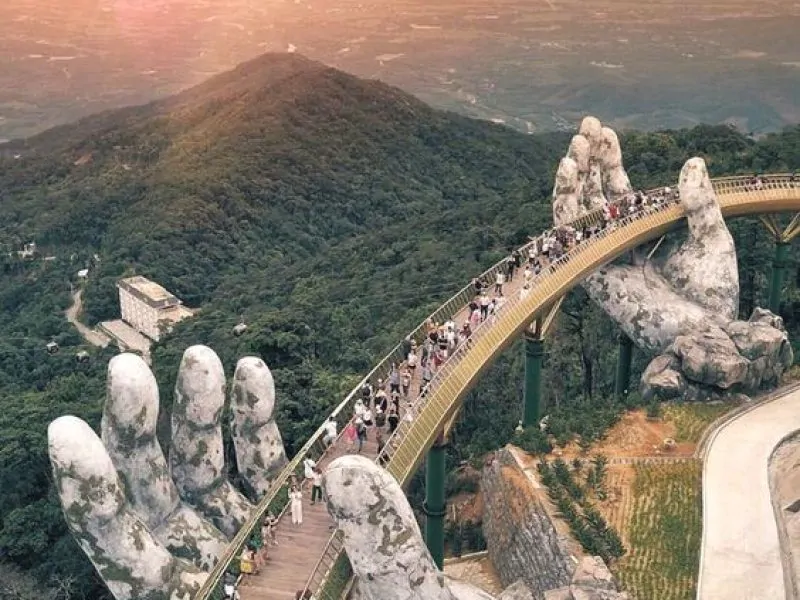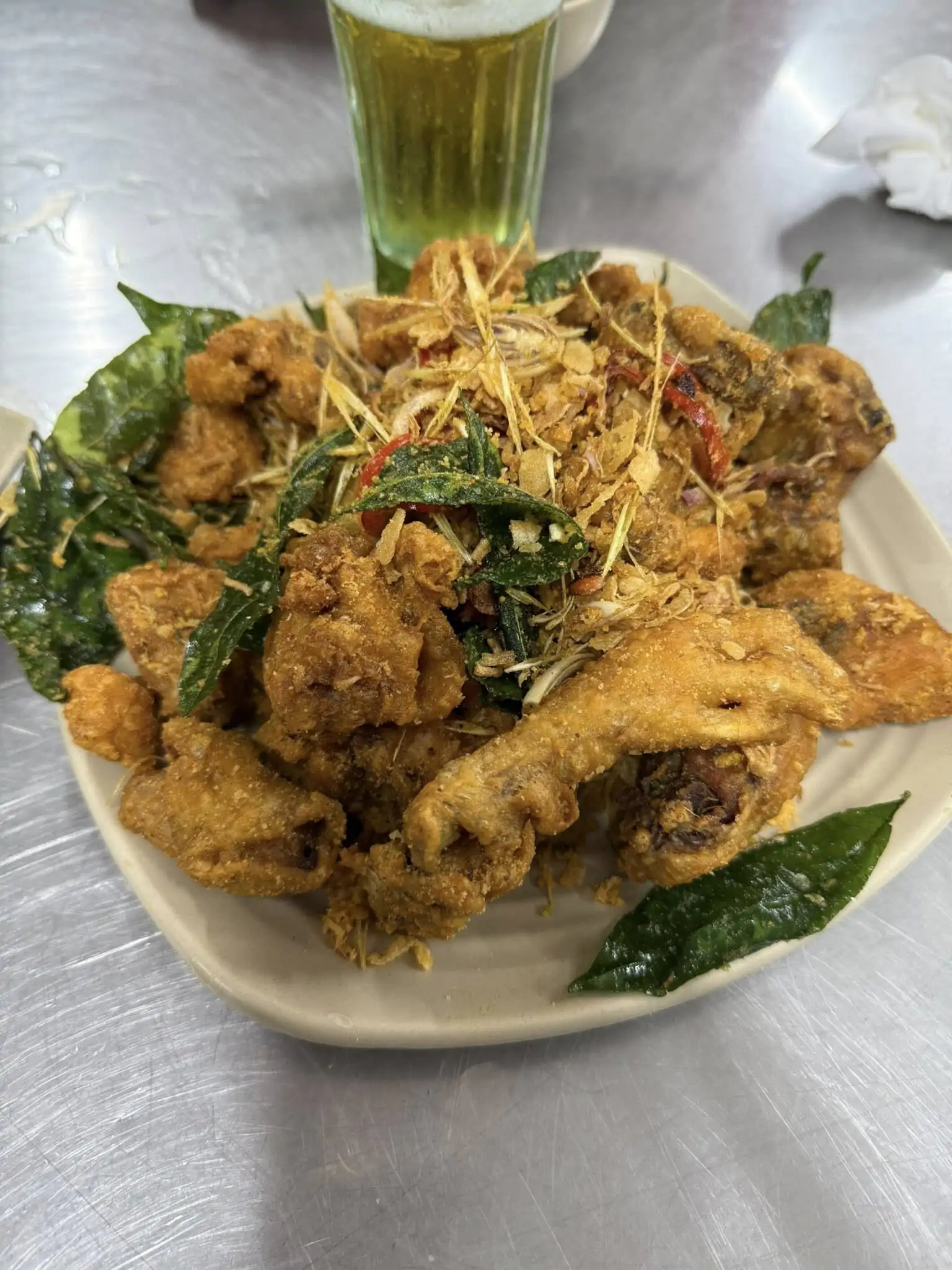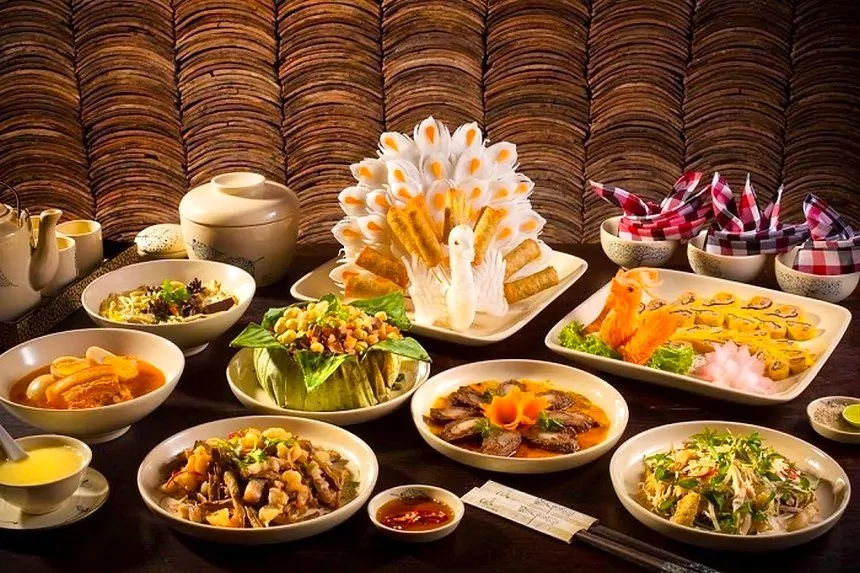20 Incredible Landmarks in Vietnam for an Unforgettable Vietnam Discovery Travel Experience . Explore Vietnam’s top 20 landmarks, from the stunning Halong Bay and historic Hue Citadel to the captivating Phong Nha Caves and charming Hoi An Ancient Town. Discover majestic temples, scenic natural wonders, and vibrant cityscapes that showcase Vietnam’s rich history and culture. Perfect for travelers seeking adventure, beauty, and cultural immersion on their Vietnam discovery journey.
Landmarks in Hanoi
1. Temple of Literature

The Temple of Literature, known locally as Văn Miếu, is a remarkable historical and cultural landmark in Hanoi. Established in 1070 during the Ly dynasty, it is dedicated to Confucius and honors scholars and literary figures. The temple also served as Vietnam’s first national university. The complex is a stunning example of traditional Vietnamese architecture, featuring beautiful gardens, serene courtyards, and ornate pavilions. Visitors can explore the five courtyards, each with its own unique features, and see the Stelae of Doctors, which are stone tablets bearing the names of those who passed the royal exams.
2. The One Pillar Pagoda

The One Pillar Pagoda, or Chùa Một Cột, is one of Hanoi’s most iconic landmarks. Built in 1049 by Emperor Ly Thai Tong, the pagoda is designed to resemble a lotus flower rising from the water, symbolizing purity. This unique structure is supported by a single stone pillar and surrounded by a small pond. Despite being destroyed and rebuilt several times throughout history, the pagoda remains a symbol of Hanoi’s cultural and historical heritage. Visitors can admire the architecture and tranquil surroundings, making it a peaceful retreat in the bustling city.
Natural Landmarks in Vietnam
3. Hang Sung Sot Cave

Hang Sung Sot, or Surprise Cave, is one of the most magnificent caves in Halong Bay. Discovered by French explorers in 1901, this two-chambered cave is renowned for its impressive stalactites and stalagmites. The first chamber is spacious and adorned with formations that resemble sentries conversing in whispers, while the second chamber is even more spectacular, with a high ceiling and a variety of formations that spark the imagination. The cave offers stunning views of Halong Bay from its entrance, making it a must-visit for anyone exploring this UNESCO World Heritage site.
4. Hang Son Doong
Hang Son Doong, located in Phong Nha-Ke Bang National Park, is the largest cave in the world. Discovered in 1991 by a local farmer and surveyed in 2009 by British cavers, this colossal cave stretches over 5.5 miles and features a river, jungle, and unique weather system. The cave is so large that it could house an entire city block of New York City skyscrapers. Adventurous travelers can embark on multi-day expeditions to explore Hang Son Doong’s massive chambers, underground rivers, and unique ecosystems. This once-in-a-lifetime experience showcases the sheer scale and beauty of Vietnam’s natural wonders.
5. Ban Gioc Waterfalls

Ban Gioc Waterfalls, located on the Quay Son River in Cao Bang province, is one of the most stunning natural landmarks in Vietnam. These majestic waterfalls straddle the border between Vietnam and China, creating a breathtaking scene of cascading water and lush greenery. At 30 meters high and 300 meters wide, Ban Gioc is the largest waterfall in Vietnam. Visitors can take boat rides to get closer to the falls, explore nearby caves, and enjoy the serene beauty of the surrounding landscape. Ban Gioc Waterfalls is a must-see for nature lovers and photographers.
6. Cat Dua
Cat Dua, also known as Pineapple Island, is a picturesque island located in Lan Ha Bay, adjacent to Halong Bay. This lesser-known gem offers pristine beaches, clear turquoise waters, and stunning limestone karsts. Visitors can relax on the sandy shores, swim in the crystal-clear waters, or explore the island’s hidden caves and grottoes. Cat Dua is an ideal destination for those seeking a tranquil escape from the crowds of Halong Bay while still enjoying its natural beauty.
7. Mui Ne Sand Dunes
The Mui Ne Sand Dunes, located in the coastal town of Mui Ne, are a unique and captivating natural landmark in Vietnam. These vast dunes offer a desert-like landscape that contrasts sharply with the nearby beaches and lush vegetation. There are two main types of dunes: the Red Sand Dunes, with their reddish-brown hue, and the White Sand Dunes, resembling a miniature Sahara Desert. Visitors can engage in activities such as sandboarding, quad biking, or simply taking in the surreal beauty of the dunes, especially during sunrise and sunset.
8. Titop Island

Titop Island, named after the Russian astronaut Gherman Titov who visited the island in 1962, is a popular destination in Halong Bay. The island features a beautiful sandy beach, clear waters, and a vantage point that offers panoramic views of the bay. Visitors can climb the steps to the top of the island for a breathtaking 360-degree view of Halong Bay’s emerald waters and limestone formations. The beach is perfect for swimming, sunbathing, and relaxing, making Titop Island a favorite stop for cruises in the bay.
Historic Landmarks in Vietnam
9. Cavern Pagoda
Cavern Pagoda, or Chùa Hang, is an ancient Buddhist temple nestled within a cave on Thuy Son (Water Mountain), part of the Marble Mountains in Da Nang. This serene pagoda dates back to the 17th century and offers a peaceful retreat with its impressive statues, intricate carvings, and stunning views. The pagoda’s unique location within a cave adds to its mystique, making it a fascinating place for visitors to explore and experience the spiritual ambiance of Vietnam.
10. Golden Bridge

The Golden Bridge, or Cầu Vàng, is a modern architectural marvel located in the Ba Na Hills near Da Nang. Opened in 2018, this pedestrian bridge is renowned for its unique design, featuring two giant stone hands seemingly holding up the golden walkway. The bridge offers stunning views of the surrounding mountains and forests, making it a popular destination for tourists and photographers. The Golden Bridge is part of the Ba Na Hills resort complex, which also includes a French village, gardens, and various attractions, providing a memorable experience for visitors.
11. Su Muon Pagoda
Su Muon Pagoda, located on Phu Quoc Island, is one of the island’s oldest and most revered Buddhist temples. Founded in the 1930s, the pagoda sits atop a hill, offering panoramic views of the surrounding landscape. The temple grounds feature beautiful gardens, intricate statues, and a peaceful atmosphere, making it a perfect place for reflection and meditation. Visitors can explore the pagoda, learn about its history, and enjoy the serene environment that Su Muon Pagoda provides.
12. My Son Sanctuary

My Son Sanctuary, located in Quang Nam province, is a UNESCO World Heritage site that dates back to the 4th century. This ancient Hindu temple complex was built by the Champa civilization and served as a religious and cultural center for centuries. The site features impressive red brick temples, towers, and sculptures that showcase the architectural and artistic achievements of the Champa people. Despite being partially destroyed during the Vietnam War, My Son Sanctuary remains a testament to Vietnam’s rich historical and cultural heritage.
13. Dao Tien Endangered Primate Species Centre
The Dao Tien Endangered Primate Species Centre, located in Cat Tien National Park, is dedicated to the conservation and rehabilitation of endangered primates. The center focuses on species such as the golden-cheeked gibbon, black-shanked douc langur, and silvered langur. Visitors can learn about the center’s conservation efforts, observe the primates in their natural habitat, and even participate in volunteer programs. The center plays a crucial role in protecting Vietnam’s biodiversity and raising awareness about endangered species.
14. Thien Mu Pagoda

Thien Mu Pagoda, also known as the Pagoda of the Celestial Lady, is one of the most iconic landmarks in Hue. Situated on the banks of the Perfume River, this seven-story pagoda was built in 1601 and is considered the tallest religious building in Vietnam. The pagoda is surrounded by beautiful gardens and offers stunning views of the river and surrounding countryside. Visitors can explore the pagoda’s historical and religious significance, including its role in the Vietnamese Buddhist movement.
15. Tomb of Khai Dinh

The Tomb of Khai Dinh, located in Hue, is the final resting place of Emperor Khai Dinh, the 12th ruler of the Nguyen dynasty. Completed in 1931, this tomb is a unique blend of traditional Vietnamese and modern European architecture. The tomb’s interior is adorned with intricate mosaics, murals, and sculptures, showcasing the emperor’s artistic taste. Visitors can explore the tomb’s various chambers, including the main hall where the emperor’s statue and altar are located, and admire the stunning views of the surrounding landscape.
16. An Hien Garden House
An Hien Garden House, located in Hue, is a beautiful example of a traditional Vietnamese garden house. Built in the 19th century, this house belonged to a high-ranking mandarin of the Nguyen dynasty. The house features traditional architecture, with wooden beams, tiled roofs, and intricate carvings. The surrounding garden is meticulously landscaped, with a variety of plants, flowers, and a tranquil pond. Visitors can tour the house and garden, learning about the lifestyle and culture of Vietnam’s elite during the imperial era.
17. Hue Imperial City
Hue Imperial City, also known as the Citadel, is a UNESCO World Heritage site that served as the capital of Vietnam during the Nguyen dynasty from 1802 to 1945. This vast complex is surrounded by thick walls and a moat, covering an area of 520 hectares. Inside, visitors can explore a series of palaces, temples, walls, gates, courtyards, and gardens. The Imperial City includes the Forbidden Purple City, the emperor’s private residence, and various other buildings used for state functions, religious ceremonies, and daily activities of the royal family.

The architecture of the Hue Imperial City is a blend of traditional Vietnamese design and French military architecture, reflecting the cultural and historical influences of the period. Key attractions within the Citadel include the Noon Gate (Ngo Mon), Thai Hoa Palace, and the To Mieu Temple Complex. Despite suffering significant damage during the Vietnam War, the Hue Imperial City remains a symbol of Vietnam’s rich history and cultural heritage.
18. Japanese Covered Bridge

The Japanese Covered Bridge, or Chùa Cầu, is an iconic symbol of Hoi An, a historic trading port and UNESCO World Heritage site in central Vietnam. Constructed in the early 17th century by the Japanese community, the bridge was built to connect them with the Chinese quarters across a small stream. The bridge features a unique architectural style with a curved wooden structure and a tiled roof, combining elements of Japanese, Chinese, and Vietnamese design.
At each end of the bridge, there are statues of dogs and monkeys, which are believed to represent the years of construction and completion, or the Chinese zodiac signs of the builders. The bridge also houses a small temple dedicated to the northern god Tran Vo Bac De, who is believed to control the weather. The Japanese Covered Bridge is not only a functional piece of infrastructure but also a cultural and historical relic, attracting visitors with its charming beauty and historical significance.
19. Cu Chi Tunnels
The Cu Chi Tunnels, located just outside Ho Chi Minh City, are an extensive network of underground tunnels that played a crucial role during the Vietnam War. These tunnels, stretching over 250 kilometers, were used by Viet Cong soldiers as hiding spots, communication and supply routes, hospitals, and living quarters. The tunnels were a vital part of the guerilla warfare strategy, allowing Viet Cong forces to move undetected and launch surprise attacks.

Visitors to the Cu Chi Tunnels can explore a small section of the tunnels, which have been preserved and widened for tourism purposes. The site offers a fascinating glimpse into the harsh conditions and ingenuity of the Vietnamese soldiers. Exhibits include various traps, living areas, kitchens, and weapon-making facilities. Guided tours provide historical context and insights into the daily lives of those who lived and fought in the tunnels, making it a poignant and educational experience.
20. Phuoc Lam Pagoda
Phuoc Lam Pagoda, located in Hoi An, is one of the town’s oldest and most significant Buddhist temples. Established in the 17th century, the pagoda reflects traditional Vietnamese architecture with its wooden structures, tiled roofs, and intricate carvings. The pagoda serves as a spiritual center for the local community and a place of worship for Buddhist practitioners.
The serene atmosphere of Phuoc Lam Pagoda, combined with its beautiful gardens and statues of Buddha, offers a peaceful retreat from the bustling streets of Hoi An. Visitors can explore the various halls and altars, each dedicated to different deities and historical figures. The pagoda also hosts various religious ceremonies and festivals, providing an opportunity for visitors to experience the rich spiritual traditions of Vietnam.
Conclusion
20 Incredible Landmarks in Vietnam: Discover Top Attractions with Vietnam Discovery Tours . Explore the most breathtaking landmarks in Vietnam, including the stunning Halong Bay, historic Hue Citadel, and the enchanting Phong Nha Caves. Immerse yourself in the charm of Hoi An Ancient Town and discover hidden gems across the country. Ready for an unforgettable adventure? Contact us on WhatsApp at +84 799 702 888 for personalized Vietnam discovery tours and start your amazing journey today!
























